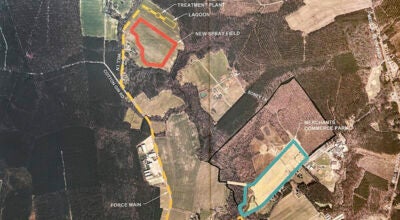Governor extends ‘Stay At Home’ order through May 8
Published 4:19 pm Thursday, April 23, 2020
|
Getting your Trinity Audio player ready...
|
RALEIGH – ‘Spring Fever’ is here, but North Carolinians will have to wait at least two more weeks to possibly leave their homes to enjoy it.
On Thursday, Governor Roy Cooper issued Executive Order No. 135, extending his Stay At Home order through May 8 as he feels the state isn’t quite ready to reopen for business as the number of COVID-19 cases continues to rise.
The order also extend the closure of restaurants for dine-in service and bars as well as other close-contact businesses through May 8.
On Friday, Cooper announced that public schools across the state will remain closed for the rest of the school year because of the ongoing coronavirus pandemic. When schools open next fall will depend on public health data in the coming months, Cooper said.
All public schools have been closed since March 16.
State school officials stressed that teachers will remain on the job to provide students with education materials (online delivery of course work and written packets) until the regularly scheduled end of the school year in each county.
Friday’s press conference also was used for Cooper to announce budget details for the $1.4 billion of federal funds the state will receive. Cooper said those funds would be used in three main areas: public health, education/government services, and aid for small businesses. The latter would provide $75 million for small businesses through a Golden Leaf program, and $300 million for local governments (counties and cities/towns).
Cooper shared details about North Carolina’s plan to lift restrictions in three phases once the data show that key metrics are headed in the right direction.
Last week, Cooper laid out the path forward centered on three things: testing, tracing and trends. Thursday, the Governor and Dr. Mandy Cohen, Secretary of NC Department of Health and Human Services, shared more specifics on those key metrics. The Stay At Home and other orders are extended because North Carolina has not yet seen a downward trajectory of those metrics needed to begin gradually lifting restrictions.
“North Carolina cannot stay at home indefinitely,” added Cooper. “We have to get more people back to work. Right now, the decision to stay at home is based on the public health data and White House guidance. North Carolina needs more time to slow the spread of this virus before we can safely begin lifting restrictions. I know that this pandemic has made life difficult for many people in our state and I am focused on keeping our communities safe while planning to slowly lift restrictions to help cushion the blow to our economy.”
In order to begin lifting restrictions, Cooper said North Carolina needs to see progress in Sustained Leveling or Decreased Trajectory in COVID-Like Illness (CLI) Surveillance over 14 days; Sustained Leveling or Decreased Trajectory of Lab-Confirmed cases over 14 days; Sustained Leveling or Decreased Trajectory in percent of tests returning positive over 14 days; and Sustained Leveling or Decreased Trajectory in Hospitalizations over 14 days.
Cooper also shared information about how North Carolina can gradually re-open over three phases to prevent hot spots of viral spread while also beginning to bring the economy back. These phases are based on the best information available now, but could be altered as new information emerges.
Phase 1 will modify the Stay At Home order to allow travel not currently defined as essential allowing people to leave home for commercial activity at any business that is allowed to be open, such as clothing stores, sporting goods stores, book shops, houseware stores and other retailers.
Ensure that any open stores implement appropriate employee and consumer social distancing, enhanced hygiene and cleaning protocols, symptom screening of employees, accommodations for vulnerable workers, and provide education to employees and workers to combat misinformation.
Continue to limit gatherings to no more than 10 people.
Reopen parks that have been closed subject to the same gathering limitation. Outdoor exercise will continue to be encouraged.
Continue to recommend face coverings in public spaces when 6 feet of distancing isn’t possible.
Encourage employers to continue teleworking policies.
Continue rigorous restrictions on nursing homes and other congregant care settings.
Local emergency orders with more restrictive measures may remain in place.
Phase 2 (which would become effective at least 2-3 weeks after Phase 1) would lift the Stay At Home order with strong encouragement for vulnerable populations to continue staying at home. It would allow limited opening of restaurants, bars, fitness centers, personal care services, and other businesses that can follow safety protocols including the potential need to reduce capacity. Allow gathering at places such as houses of worship and entertainment venues at reduced capacity. Continue rigorous restrictions on nursing homes and other congregant care settings .
Phase 3 (at least 4-6 weeks after Phase 2) would lessen restrictions for vulnerable populations with encouragement to continue practicing physical distancing and minimizing exposure to settings where distancing isn’t possible. Allow increased capacity at restaurants, bars, other businesses, houses of worships, and entertainment venues. Further increase the number of people allowed at gatherings. Continue rigorous restrictions on nursing homes and other congregant care settings.



